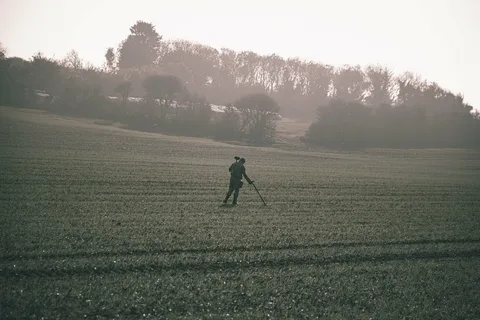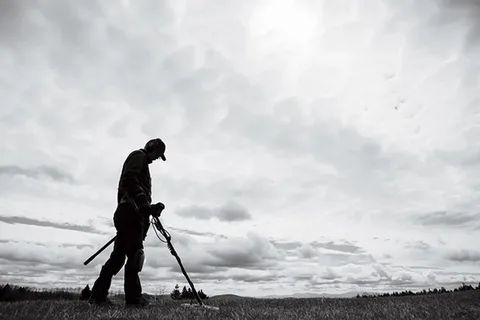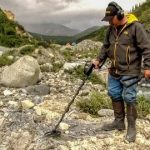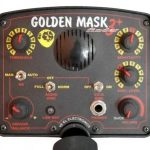Gold Rush:
The 1849 Gold Rush is a well-known event in American history, with images of hopeful miners and riches instantly coming to mind. However, there are many untold stories and details about this pivotal moment in the nation’s past. In this article, we will delve into the lesser-known aspects of the Gold Rush, uncovering the hidden stories and shedding light on the impact it had on the individuals and communities involved. From the diverse group of people who made the journey to the harsh realities of life in the goldfields, we will explore the untold tales of the 1849 Gold Rush.
Uncovering the Untold Stories of the 1849 Gold Rush explores the lesser-known narratives and perspectives of the famous event that shaped American history. This project delves into the lives of the marginalized and underrepresented individuals who participated in the gold rush, shedding light on their experiences and contributions to the period. Through extensive research and in-depth storytelling, this endeavor aims to provide a more comprehensive understanding of the 1849 Gold Rush and its impact on diverse communities.
The Wild West Gold Rush: A History of Boom and Bust

The Wild West Gold Rush: A History of Boom and Bust is a book that delves into the exciting and tumultuous period of the late 19th century when gold was discovered in the Western United States. The book explores the impact of the gold rush on the region, including the rapid population growth, the rise of mining towns, and the economic and social changes that occurred as a result. It also examines the darker side of the gold rush, including the displacement and exploitation of Native American communities, environmental destruction, and the eventual collapse of many mining operations. The Wild West Gold Rush provides a comprehensive look at this pivotal moment in American history, shedding light on both the opportunities and challenges that arose during this period of boom and bust.
Gold Fever: Tales from the California Gold Rush

Gold Fever: Tales from the California Gold Rush is a book that provides a collection of first-hand accounts and historical narratives from the intense period of the California Gold Rush. The book offers perspectives from the miners, adventurers, and immigrants who flocked to California in search of gold, offering a glimpse into the harsh realities and the excitement of the Gold Rush era. It captures the spirit of an important moment in American history and provides a valuable insight into the human experience during that time.
Gold Rush Legacy: Impact on Indigenous Communities

The Gold Rush had a significant impact on Indigenous communities in North America. Many tribes were displaced from their traditional lands as gold seekers flooded into their territories. This often led to violent clashes and the loss of ancient hunting and fishing grounds.
The influx of miners also brought diseases, such as smallpox, which decimated Indigenous populations. Additionally, the mining activities caused environmental degradation, including pollution of water sources and destruction of forests, which had long-term impacts on Indigenous communities’ ability to sustain themselves.
Furthermore, the Gold Rush disrupted established trade networks and forced Indigenous peoples to adapt to a rapidly changing world. This had lasting social, cultural, and economic implications for these communities.
Overall, the Gold Rush had a devastating impact on Indigenous communities, leading to loss of land, population decline, and social upheaval that continue to affect these communities today.
The Klondike Gold Rush: Treacherous Trails and Riches

The Klondike Gold Rush, also known as the Yukon Gold Rush, was a migration of prospectors to the Klondike region of the Yukon in north-western Canada between 1896 and 1899. It was a result of the discovery of gold in the area and led to the arrival of around 100,000 prospectors in the region.
The journey to the Klondike was treacherous and required traversing rugged terrain and harsh weather conditions. Many prospectors faced grueling challenges along the way, including steep mountain passes and freezing river crossings. The infamous Chilkoot and White Pass trails were two of the most difficult routes to the goldfields, and the arduous journey became known as the “Klondike Stamped.”
Despite the risks involved, many prospectors were lured by the promise of wealth and riches. While some were successful in finding gold, many others returned empty-handed or faced significant hardships.
The Klondike Gold Rush had a lasting impact on the region, leading to the development of new towns and infrastructure in the Yukon. It also had a significant impact on the indigenous communities in the area.
Overall, the Klondike Gold Rush was a defining moment in Canadian history and continues to be remembered as a dramatic and transformative period.
Women of the Gold Rush: Stories of Resilience and Fortitude
“Women of the Gold Rush: Stories of Resilience and Fortitude” is a collection of real-life stories of women who lived during the Gold Rush era in the United States. The book sheds light on the experiences and hardships faced by these women as they navigated through the challenges of the Gold Rush, often in a male-dominated and harsh environment. The stories highlight the strength, resilience, and fortitude displayed by these women as they carved out their own paths and made significant contributions to the development of the West. Through these narratives, readers gain a deeper understanding of the crucial role that women played during this historical period, challenging traditional gender norms and overcoming adversity in pursuit of their dreams. The book provides a fascinating and empowering look into the lives of these unsung heroes of the Gold Rush.
Gold Rush Ghost Towns: Relics of a Bygone Era
Gold Rush Ghost Towns: Relics of a Bygone Era explores the history and significance of the abandoned towns and settlements that were once bustling with activity during the 19th-century Gold Rush in the United States. The book delves into the stories of the people who flocked to these towns in search of wealth and opportunity, only to be left behind as the gold mines dwindled and the towns were ultimately abandoned. Through a combination of historical research, archival photographs, and firsthand accounts, the book offers a glimpse into the lives of those who inhabited these ghost towns and the impact of the Gold Rush on American history and culture. It provides insight into the abandoned structures, artifacts, and remnants that serve as reminders of a time long past, and highlights the efforts to preserve and interpret these sites for future generations. Gold Rush Ghost Towns: Relics of a Bygone Era offers a fascinating exploration of a significant period in American history and the enduring legacy of the Gold Rush on the landscape of the American West.
Environmental Impact of Gold Rush Mining: A Legacy of Destruction
The gold rush mining activities had far-reaching environmental impacts, leaving a legacy of destruction in their wake. Large-scale mining operations led to deforestation, soil erosion, and the contamination of water sources with mercury and other toxins. This in turn had significant implications for local ecosystems and wildlife.
The removal of trees and vegetation for mining operations led to loss of habitat for many species, while soil erosion caused by mining activities affected the quality of the soil and damaged agricultural lands. The use of mercury in the extraction process resulted in water pollution, impacting both aquatic life and human populations that relied on these water sources.
Additionally, the construction of infrastructure such as roads and railways for transporting gold and other resources further disrupted natural habitats and contributed to environmental degradation. The legacy of destruction left by gold rush mining continues to have lasting impacts on the environment, highlighting the need for more sustainable and responsible mining practices.
Gold Rush Economics: The Rise and Fall of Boomtowns
Gold Rush Economics: The Rise and Fall of Boomtowns examines the economic impact of the gold rushes that occurred throughout the 19th century in various parts of the world. The book delves into the economic conditions that led to the rapid growth of boomtowns, the subsequent influx of settlers and entrepreneurs, and the resulting rise and fall of these communities. It also explores the consequences of the rapid depletion of gold reserves, the effects of mining on the environment, and the long-term economic consequences for the regions affected. The book provides a comprehensive analysis of the economic dynamics of gold rushes and their lasting impact on local economies.
Gold Rush Artifacts and Relics: A Look into the Past
See also: gold mining machinery
“Gold Rush Artifacts and Relics: A Look into the Past” is a historical exhibition that showcases a variety of objects from the 19th-century Gold Rush era. The artifacts on display include tools, clothing, mining equipment, and personal items used by prospectors during the gold rush. Visitors can gain a deeper insight into the challenges and lifestyle of those who sought their fortunes in the goldfields. The relics offer a tangible connection to this significant period in American history, allowing modern audiences to appreciate the hardships and triumphs of the gold rush pioneers. Through this exhibition, visitors can explore the legacy of the gold rush and its lasting impact on the development of the American West.
Exploring Gold Rush Heritage: Museums and Historic Sites
Exploring Gold Rush Heritage: Museums and Historic Sites allows visitors to experience the history and culture of the Gold Rush era through various artifacts, exhibits, and knowledgeable guides. These museums and historic sites provide a glimpse into the lives of early miners and settlers, as well as the impact of the Gold Rush on the local communities. Some popular sites include the California State Mining and Mineral Museum, Marshall Gold Discovery State Historic Park, and the Gold Rush Museum in Old Sacramento.Visitors can learn about the various mining techniques, tools, and equipment used during the Gold Rush, as well as the struggles and triumphs of those who sought their fortunes in the goldfields. Additionally, many of these museums and historic sites offer educational programs, demonstrations, and special events that bring the history of the Gold Rush to life for visitors of all ages.









